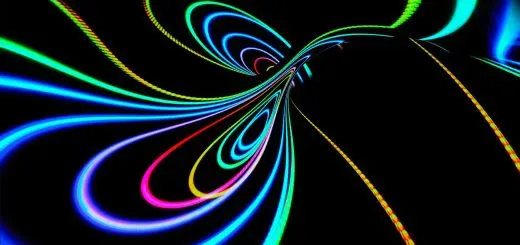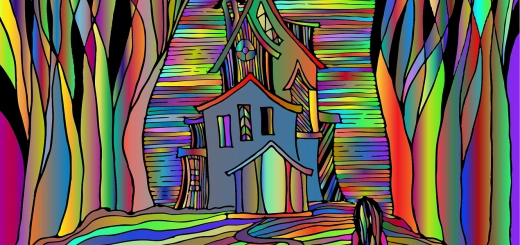What Colors Make Pink? A Simple Mixing Guide

Looking for more amazing products? Check out our online store and explore our collection here! Happy shopping!
Before diving in, please note: This post is for informational purposes only. If you’d like to know more about how we approach topics, feel free to check out our friendly Disclaimer Page.
Hey there, amazing readers! 
We’re committed to delivering quality posts, and your support (even just sticking around despite the ads) means everything to us. So, bear with us, and thanks for helping us keep the good vibes rolling. Now, on to the fun stuff!
TRANSLATE BUTTON AT THE END OF THE ARTICLE
A Quick Overview
Have you ever wondered what colors combine to create that delightful shade of pink?
You’re not alone!
Pink is one of those vibrant colors that bring joy and warmth to our lives.
Whether you’re decorating a room, choosing an outfit, or getting crafty with some paints, knowing how to mix pink can be incredibly useful.
In this article, we’ll explore the fascinating journey of color mixing, specifically focusing on how to create the endless shades of pink.
From the basics of color theory to practical mixing techniques, you’ll be well-equipped to unleash your inner artist.
What Colors Make Pink? A Simple Mixing Guide
To create pink, you primarily need red and white.
It’s as simple as that!
But don’t stop there.
Mixing colors can open up a whole new world of pink shades.
You can achieve hot pink, pastel pink, or even a soft blush by varying the proportions of red and white.
Here’s a straightforward recipe for making pink:
Start with Red: Use a bright red as your base.
The red you choose will influence the shade of pink you create.
Add White Gradually: Mix in white paint a little at a time.
This way, you can control how light or dark you want your pink.
Blend Well: Use a palette knife or a brush to mix the colors thoroughly until you reach your desired shade.
I recommend testing your mix on a piece of scrap paper before committing to your project.
Sometimes, what looks good on the palette can appear different when applied.
Understanding the Basics of Color Mixing
Color mixing can feel like a magical experience.
The way colors interact can produce surprising results!
At its core, color mixing involves combining pigments to create new hues.
There are two main types of mixing: additive and subtractive.
Additive Mixing: This method applies to light.
If you’ve ever used a computer screen, you’ve seen this in action.
Combining red, green, and blue light creates white light.
Subtractive Mixing: This method applies to pigments like paint.
When you mix colors, you’re absorbing (subtracting) certain wavelengths of light and reflecting others.
That’s why combining all colors tends to give you a muddy brown instead of a bright hue.
In painting, we’re primarily concerned with subtractive mixing, where we combine colors based on how they absorb and reflect light.
The Color Wheel: A Quick Overview for Beginners
The color wheel is an artist’s best friend.
It visually represents how colors relate to each other.
Understanding this wheel can make color mixing feel less daunting.
Primary Colors: Red, blue, and yellow.
These colors cannot be made by mixing other colors.
Secondary Colors: Green, orange, and purple.
You make these by mixing two primary colors (e.g., red and yellow make orange).
Tertiary Colors: These are the mixtures of primary and secondary colors (like red-orange).
Now, pink is not on the color wheel as a primary or secondary color, but it’s a tint of red.
By adding white to red, we shift on the wheel toward lighter shades, creating various pinks.
This understanding can be a game-changer when choosing colors for your projects.
Primary Colors: The Foundation of Pink Creation
Let’s take a closer look at primary colors, since they are essential for creating pink.
Red: It’s the star of the show!
Red is vibrant, passionate, and forms the basis of pink.
Depending on the red you start with, the resulting pink can vary significantly.
Blue: While blue doesn’t contribute to pink directly, it can influence its shade.
For instance, adding a bit of blue to red can create a muted pink or even a mauve.
Yellow: Similarly, yellow doesn’t create pink, but it adds warmth when mixed with red.
Beware though, as too much yellow can lead to orange instead.
Understanding these primary colors gives you a solid foundation to play around with pink and other colors.
You’ll start to notice how each color behaves and reacts with others.
Secondary Colors: How They Relate to Pink
Moving on to secondary colors, let’s see how they can enrich our pink creations.
Green: Mixing green with red creates a muted color.
If you’re adventurous, try a touch of green to explore a more earthy pink.
Orange: By mixing orange with red, you can create coral or peachy shades of pink.
This warmth can evoke feelings of summer and joy.
Purple: Adding purple to your pink can provide a deeper, more sophisticated shade.
Think of a beautiful lavender pink!
These secondary colors can help you experiment and create a wide range of pinks.
The key is to mix in small amounts and test as you go.
Mixing Red and White: The Classic Pink Recipe
Let’s dive deeper into the classic recipe of mixing red and white.
Choosing the Right Red: The type of red you choose will significantly affect the pink.
A cherry red will create a vibrant pink, while a darker red like crimson will produce a softer shade.
Starting Small: Begin with a small amount of red on your palette.
It’s easier to control the outcome when you start with less.
Adding White: Gradually add white to the red.
I usually start with a 2:1 ratio of red to white and adjust from there.
Mixing Technique: Use circular motions when mixing to ensure a smooth blend.
If you’re using a brush, don’t be afraid to switch to a palette knife for a more thorough mixing.
Testing the Shade: After mixing, test your shade on paper to see if it matches your vision.
You can always add more white for a lighter pink or more red for a deeper hue.
This simple mixing technique allows for endless possibilities!
Exploring Different Shades of Pink Through Mixing
Once you know how to mix the classic pink, it’s time to explore different shades!
Hot Pink: To achieve a vibrant hot pink, start with a deep red and add just a touch of white.
This shade is perfect for bold projects or fun parties.
Pastel Pink: For a soft, pastel pink, take a light red or even a pink paint and mix in a generous amount of white.
This works beautifully for baby showers or delicate floral arrangements.
Blush Pink: To create a subtle blush, mix equal parts of red and white, then add a tiny pinch of yellow for warmth.
This shade is perfect for weddings!
Coral Pink: Mix red with an equal part of orange and add a hint of white for that lively coral hue.
It’s a summer favorite!
Playing around with these variations will help you discover your signature pink.
Don’t be afraid to experiment!
Alternative Ways to Make Pink With Color Combinations
Besides mixing red and white, there are other ways to make pink using different color combinations.
Using Magenta: If you have magenta on hand, mix it with white for a bright pink.
This method can save you time if you’re out of red.
Peachy Pink: Combine orange with white to create a peachy pink.
This approach captures a warm, inviting feel.
Brownish Pink: For an earthy pink, mix red, yellow, and a touch of blue.
The result is a unique, muted pink that’s perfect for a rustic palette.
Cool-toned Pinks: Mix purple with white to create cool-toned pink shades, adding a touch of red to bring a hint of warmth.
These alternative combinations can help you expand your color palette and tap into new creative ideas.
Experimenting with Tints and Shades of Pink
Let’s discuss tints and shades, which are essential concepts in color mixing.
Tints: These are created by adding white to a color.
In our case, when you add white to pink, you get various lighter shades, like baby pink or pastel pink.
Shades: Adding black to a color creates a shade.
Mixing black with pink can yield a lovely mauve or rose that brings depth to your artwork.
Tone: This is created by adding gray (a mix of black and white) to pink, resulting in a muted, softer hue.
When mixing, keep a record of your combinations.
It’ll help you replicate your favorite shades in future projects!
Fun Activities to Practice Mixing Pink at Home
Now that you understand the basics of mixing, let’s put that knowledge to use with some fun activities!
Color Swatches: Grab some paint and create a range of pink swatches.
Mix different proportions and see the transformations before your eyes.
DIY Art Project: Paint a canvas with a gradient of pinks.
Start with a vibrant pink at the bottom and move to a soft pastel at the top.
Mixing Party: Gather friends for a color mixing party.
Provide different paints and see who can create the most unique shade of pink!
Paint by Numbers: Create a simple paint-by-numbers design featuring different shades of pink.
This is a fun way to practice while satisfying your inner artist!
Crafting: Use mixed pinks to create greeting cards, scrapbook pages, or even decorations for your home.
By engaging in these activities, you’ll refine your mixing skills while having a great time!
Common Mistakes in Mixing Colors to Avoid
As with any creative pursuit, color mixing has its pitfalls.
Here are some common mistakes to watch out for:
Overmixing: It’s easy to get carried away.
Overmixing can lead to muddy colors rather than vibrant shades.
Ignoring the Base Color: The base color you start with can drastically change the outcome.
Always consider how your chosen color will affect the final shade.
Using Too Much White: Adding too much white too quickly can lead to a shade that’s more pastel than you intended.
Go slow.
Skipping Tests: Failing to test your colors can lead to surprises.
Always swatch your mixes!
By avoiding these mistakes, you’ll find greater success in your color mixing journey.
Conclusion: Embrace Your Creativity with Pink!
Mixing pink can be a delightful experience, full of surprises and creative possibilities.
Whether you’re sprucing up a room, creating art, or simply having fun, understanding how to mix pink opens up a world of shades and combinations.
Remember, it’s all about experimenting and enjoying the process.
Don’t be afraid to make mistakes—they can lead to beautiful discoveries!
So grab your paints, invite a friend, and dive into the wonderful world of pink.
Your next masterpiece awaits!

The Enlightenment Journey is a remarkable collection of writings authored by a distinguished group of experts in the fields of spirituality, new age, and esoteric knowledge.
This anthology features a diverse assembly of well-experienced authors who bring their profound insights and credible perspectives to the forefront.
Each contributor possesses a wealth of knowledge and wisdom, making them authorities in their respective domains.
Together, they offer readers a transformative journey into the realms of spiritual growth, self-discovery, and esoteric enlightenment.
The Enlightenment Journey is a testament to the collective expertise of these luminaries, providing readers with a rich tapestry of ideas and information to illuminate their spiritual path.
Our Diverse Expertise
While our primary focus is on spirituality and esotericism, we are equally passionate about exploring a wide range of other topics and niches 

To ensure we provide the most accurate and valuable insights, we collaborate with trusted experts in their respective domains 
Our blog originally focused on spirituality and metaphysics, but we’ve since expanded to cover a wide range of niches. Don’t worry—we continue to publish a lot of articles on spirituality! Frequently visit our blog to explore our diverse content and stay tuned for more insightful reads.
Hey there, amazing reader! 
Check out our store here and take a peek at some of our featured products below! Thanks for being awesome!












